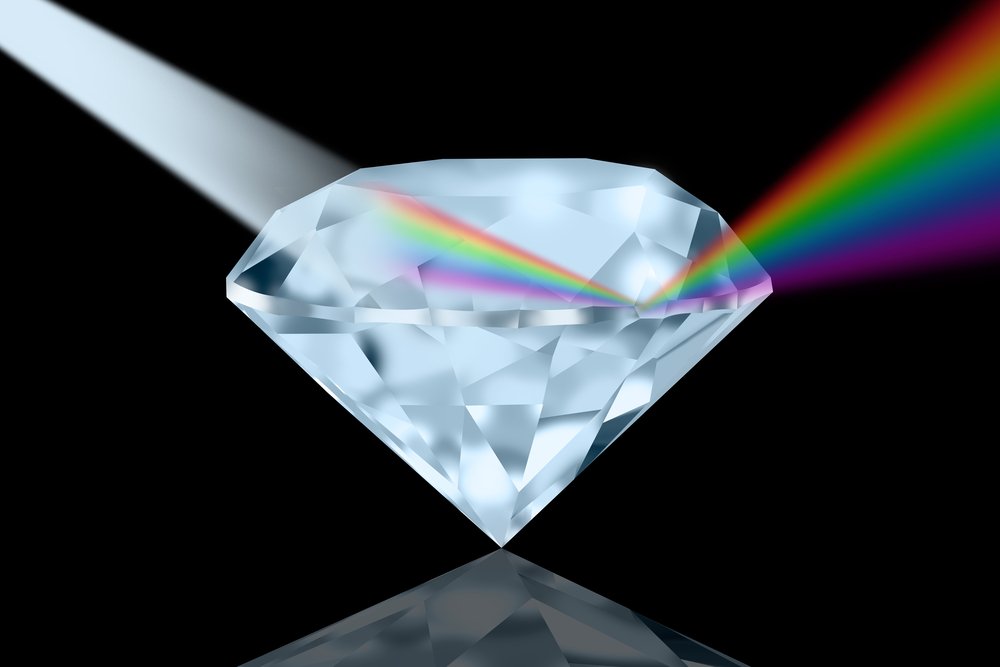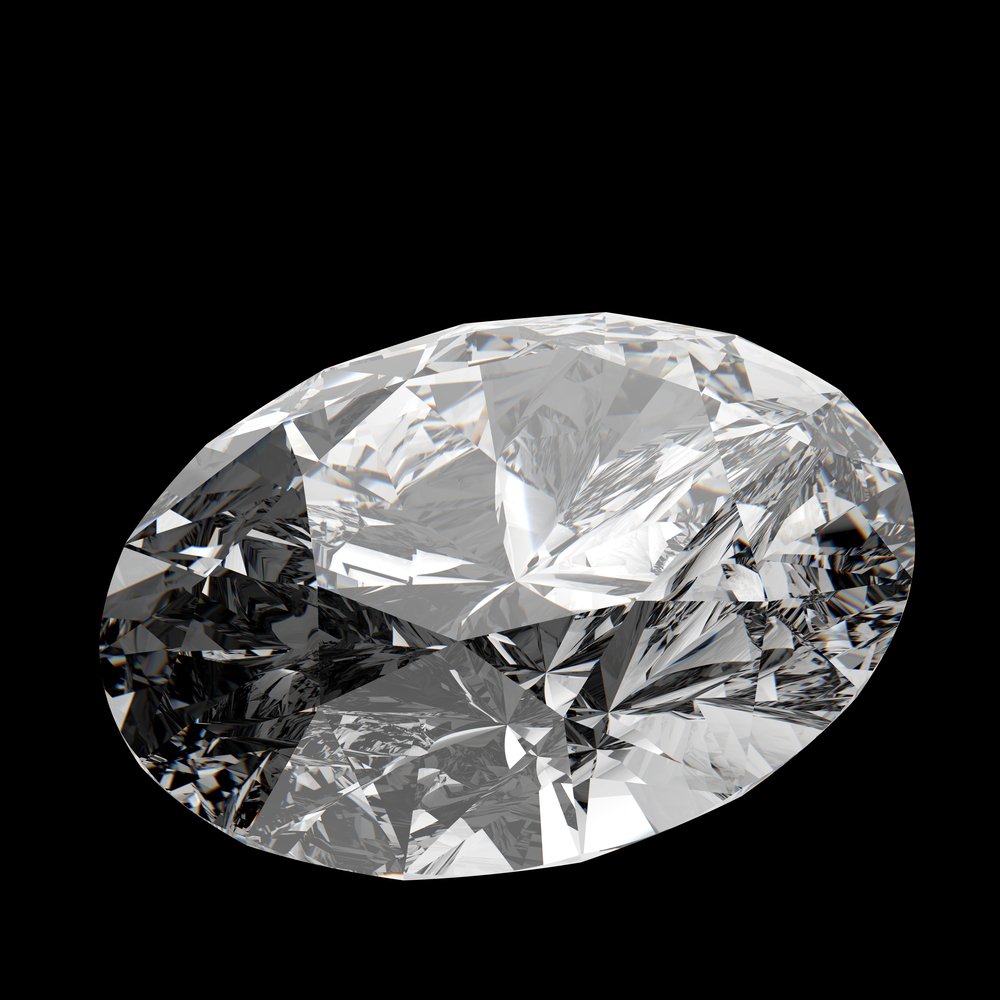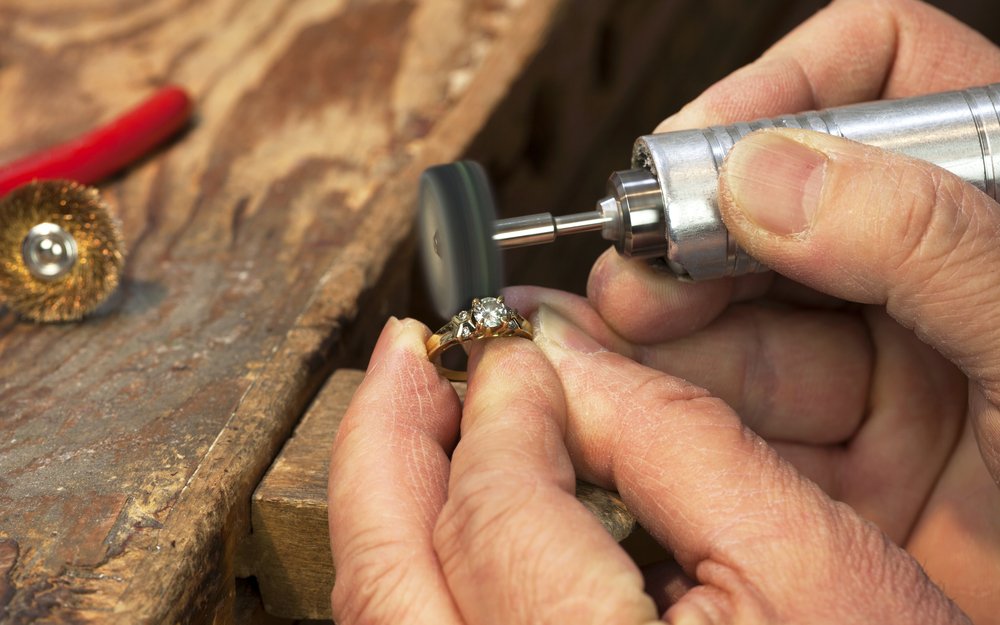A diamond’s sparkle is the result of three things: reflection, refraction, and dispersion. When light hits a diamond, it reflects off of the facets and creates the appearance of a sparkle. Refraction occurs when light passes through the diamond and gets scattered. This creates the “fire” in a diamond. Dispersion is the final component of a diamond’s sparkle and is what gives the stone its rainbow effect.
I went to a jewelry store recently, and as probably happens to everyone, one of the first things that immediately caught my eye was a diamond ring shining in its velvet display box. That flash of beauty in the corner of my eye got me thinking…why do diamonds sparkle?
How does a rock that is carved out of the earth achieve such brilliance?
A natural diamond isn’t actually as shiny as you might think. That sparkle all depends on how the stone is cut and how light strikes it.
A diamond appears to be so brilliant as a result of three things: reflection, refraction and dispersion.
When lit directly from above, light enters the diamond and strikes one face of the stone, and then another, before exiting. This reflective activity is what gives a diamond its shine. To a viewer, however, it looks as if light is simply streaming out from inside the diamond.

If a diamond is cut too shallow, then light will exit from the bottom, but if it is cut too deep, the light will exit from the side. While reflection is occurring, only a small portion of the light hitting the diamond is reflected; the rest passes through it.
When light passes through the diamond, it also gets scattered and fractured. Basically, that light bends, which creates the unforgettable sparkle that has captivated us for generations.
The final component is what really gives the diamond its ‘fire’ – that rainbow effect that finally compels you to mortgage the house and buy the stunning stone.

Diamonds are essentially tiny prisms. Light enters the top, bounces around the facets, and eventually exits back out from the top, leaving us with this gleaming fire on our fingers.
Also Read: What Makes Diamonds So Hard?
You might think that all the glory a diamond gets is because of light, but what you don’t know is that the dark areas of a diamond also play an important role.
Unless the diamond is illuminated equally from all the sides, all the facets won’t light up. Dark objects in the stone’s surroundings will also be reflected, so to our eye, some parts of a diamond appear dark.

This provides a sort of contrast, you might say. For example, doesn’t the moon appear brightest against an inky black sky? Doesn’t the flame of a candle seem much more intense in a dark room as compared to a well-lit one?
Obviously, a diamond will still sparkle without contrast, but it won’t be quite so captivating or irresistible!
Another interesting reason why our eye is so drawn to the sparkle of a diamond can be explained by our brain. It has been found that some parts of the visual cortex respond to objects with high-intensity contrast edges. Therefore, due to the closeness of the dark and light facets in the diamond, our eye enhances the perceived brilliance!
This can be further enhanced if you move the stone slightly to create a dramatic flashing effect, causing different facets to light up and dim as the light source changes its angle of impact. Clarity in a diamond also affects its shine. If there are some inclusions present or some blemishes on the surface, it will affect the amount of light entering and exiting the stone, thereby affecting the amount of sparkle.
The final step for a perfect stone is to polish it. Polishing has a significant and lasting effect on the brilliance of a diamond.
Also Read: How To Tell If A Diamond Is Real

So, now that you know what makes diamonds the most sought-after stone in the world, don’t you have some shopping to do?
How well do you understand the article above!

